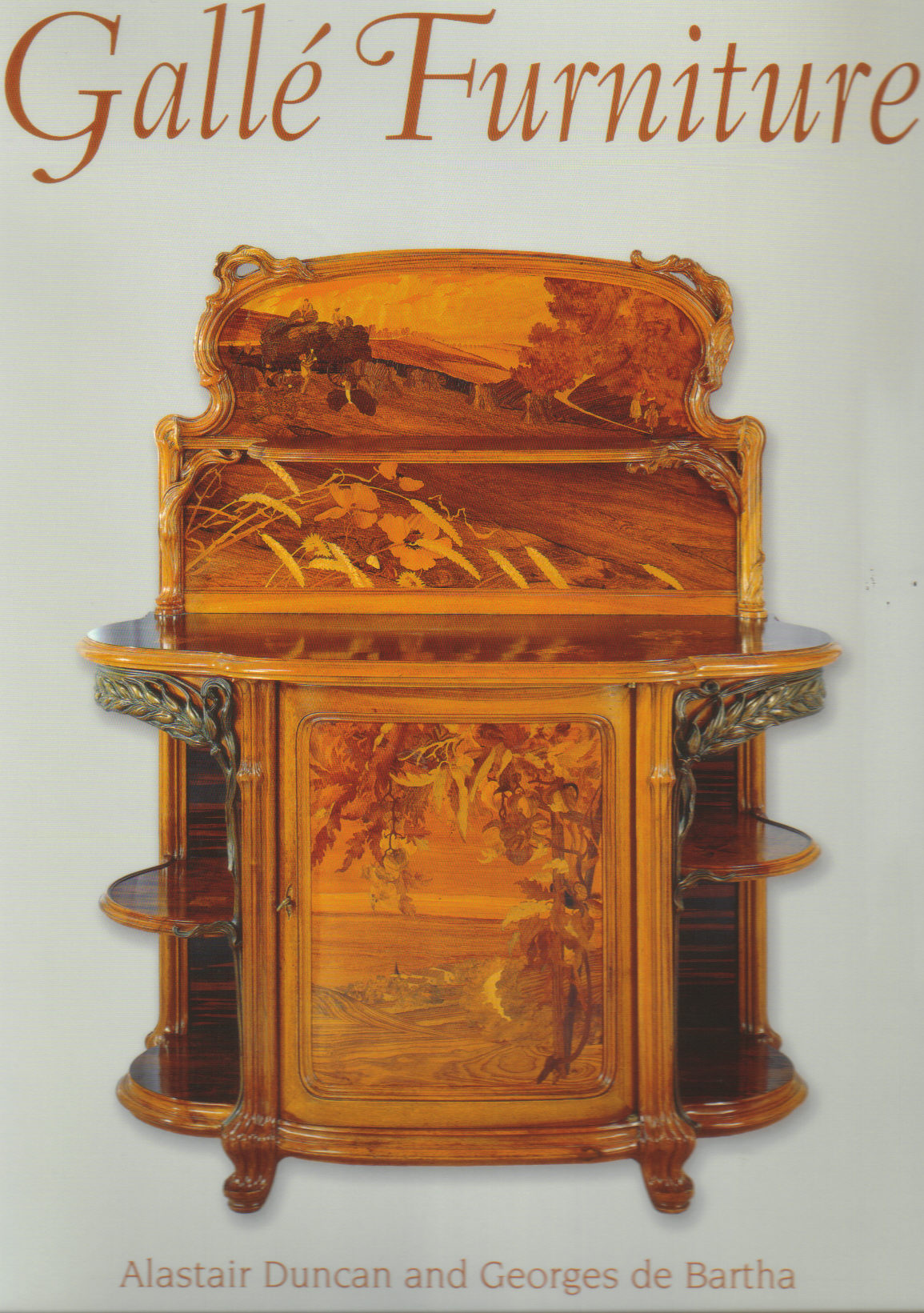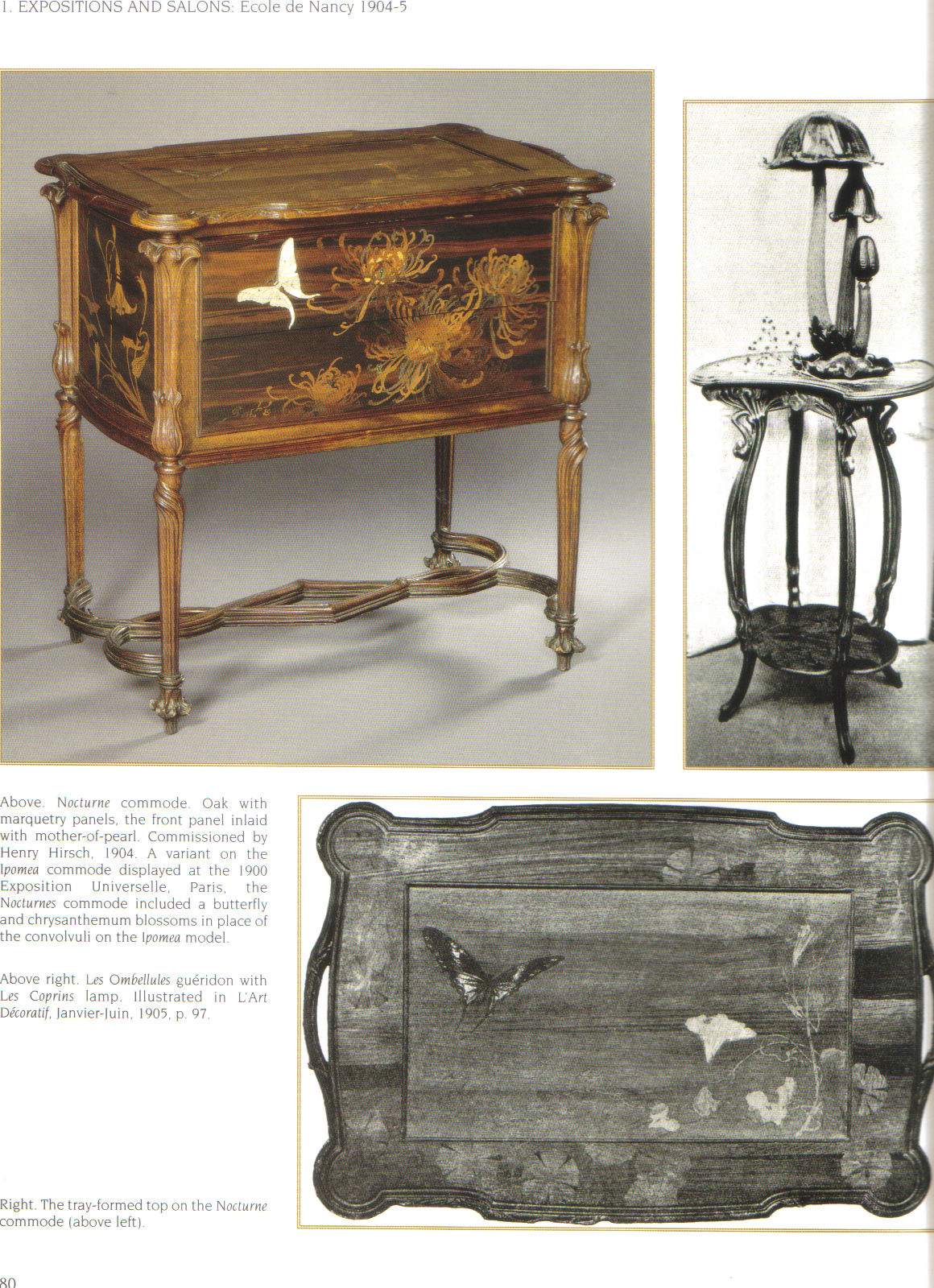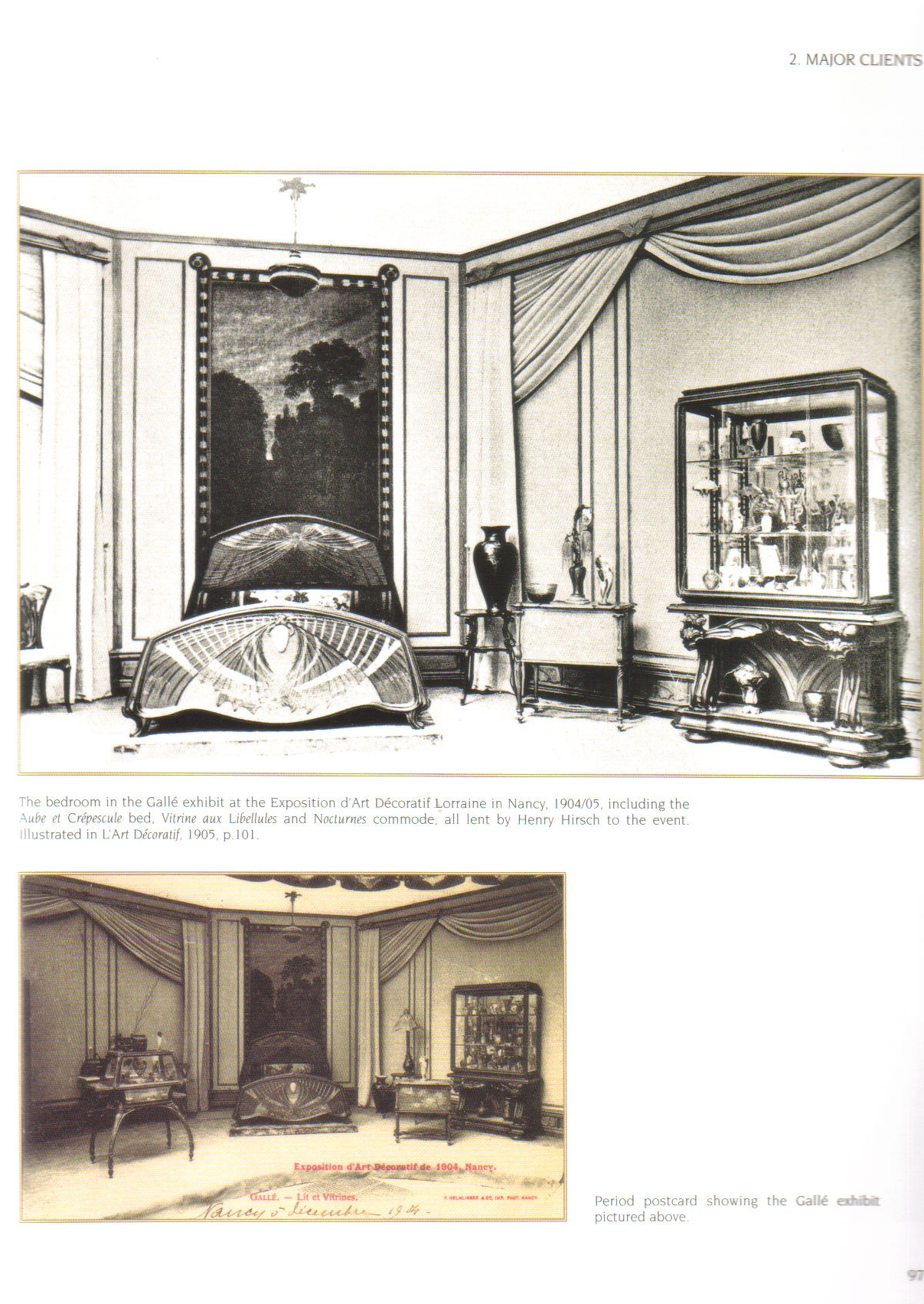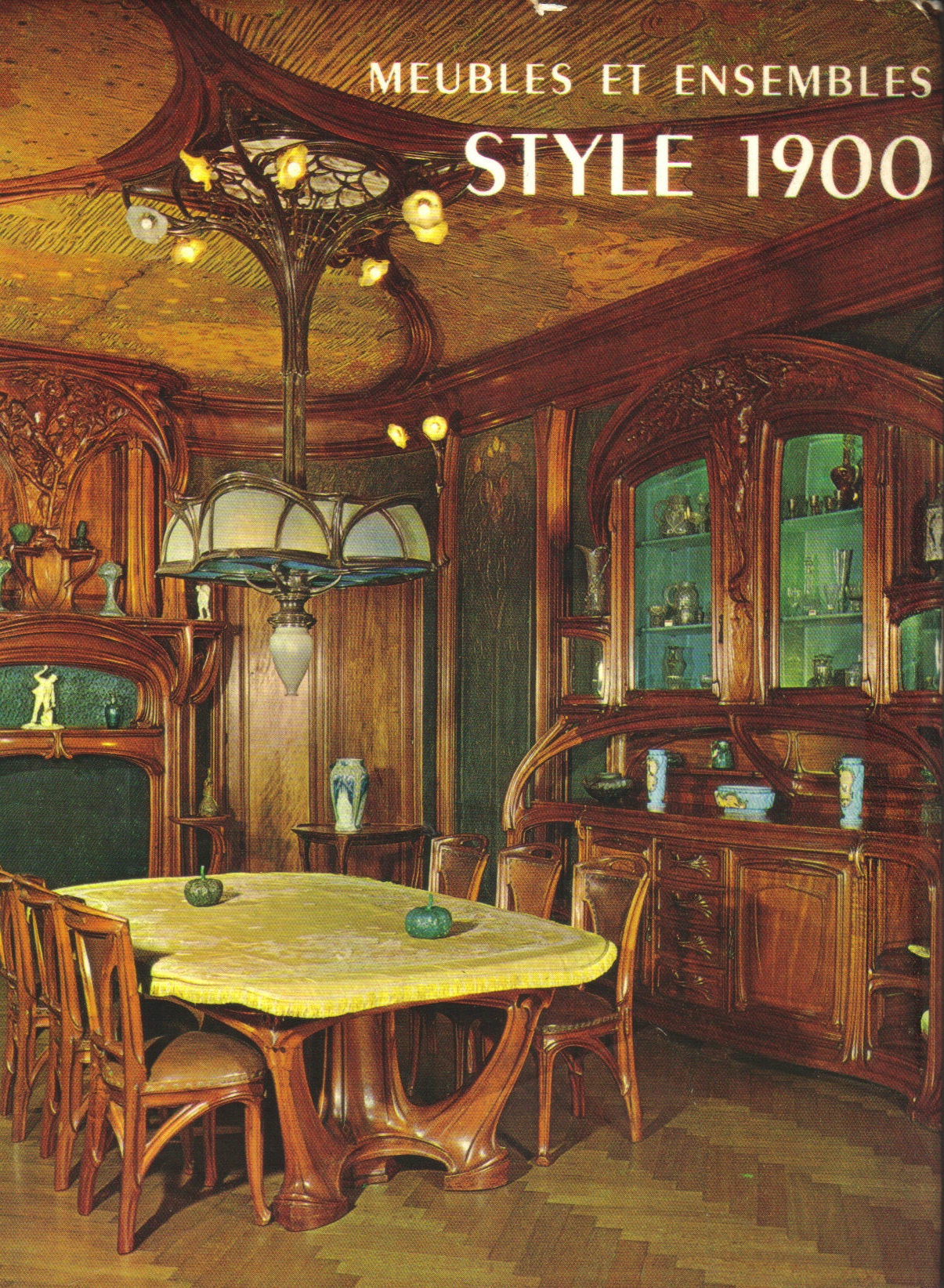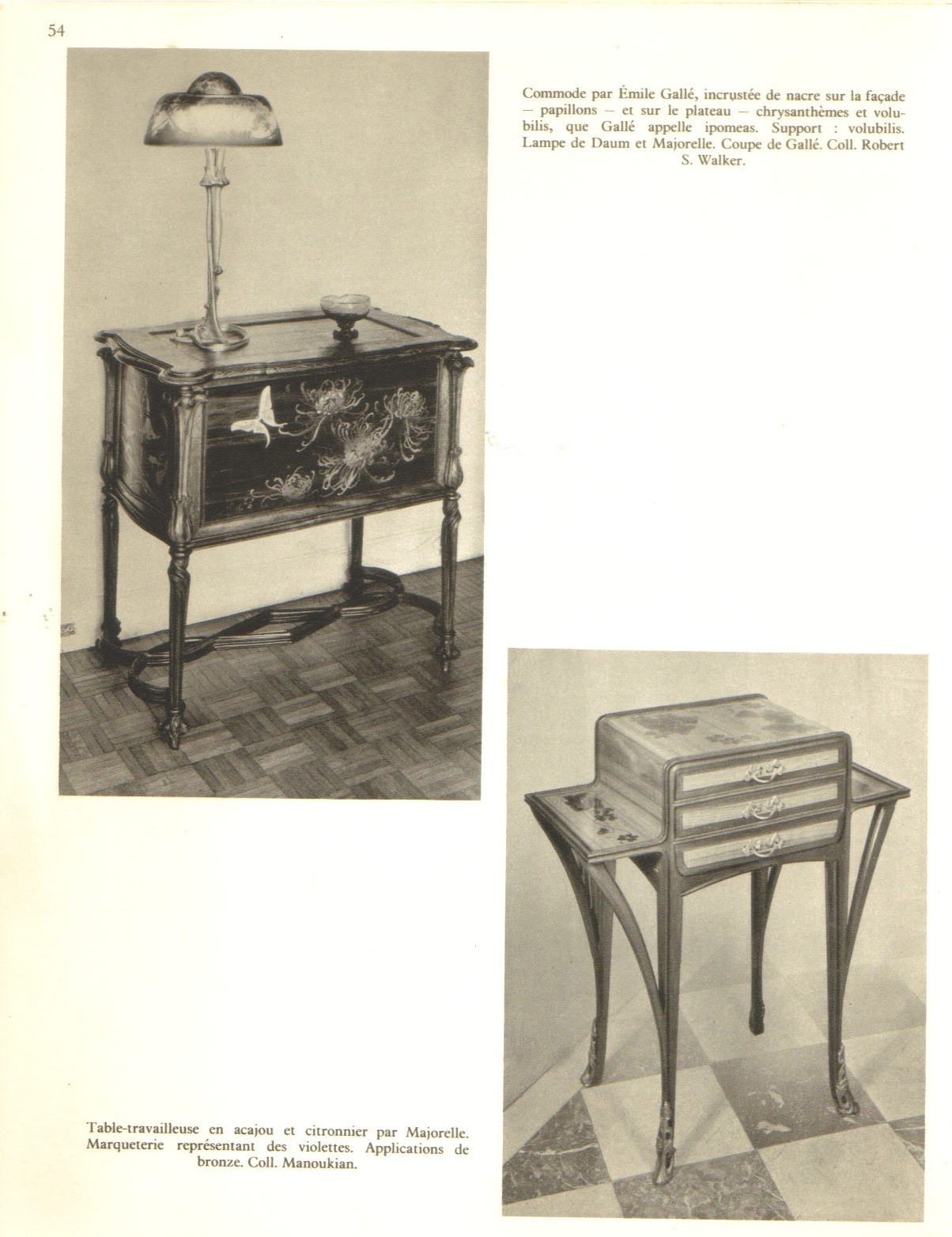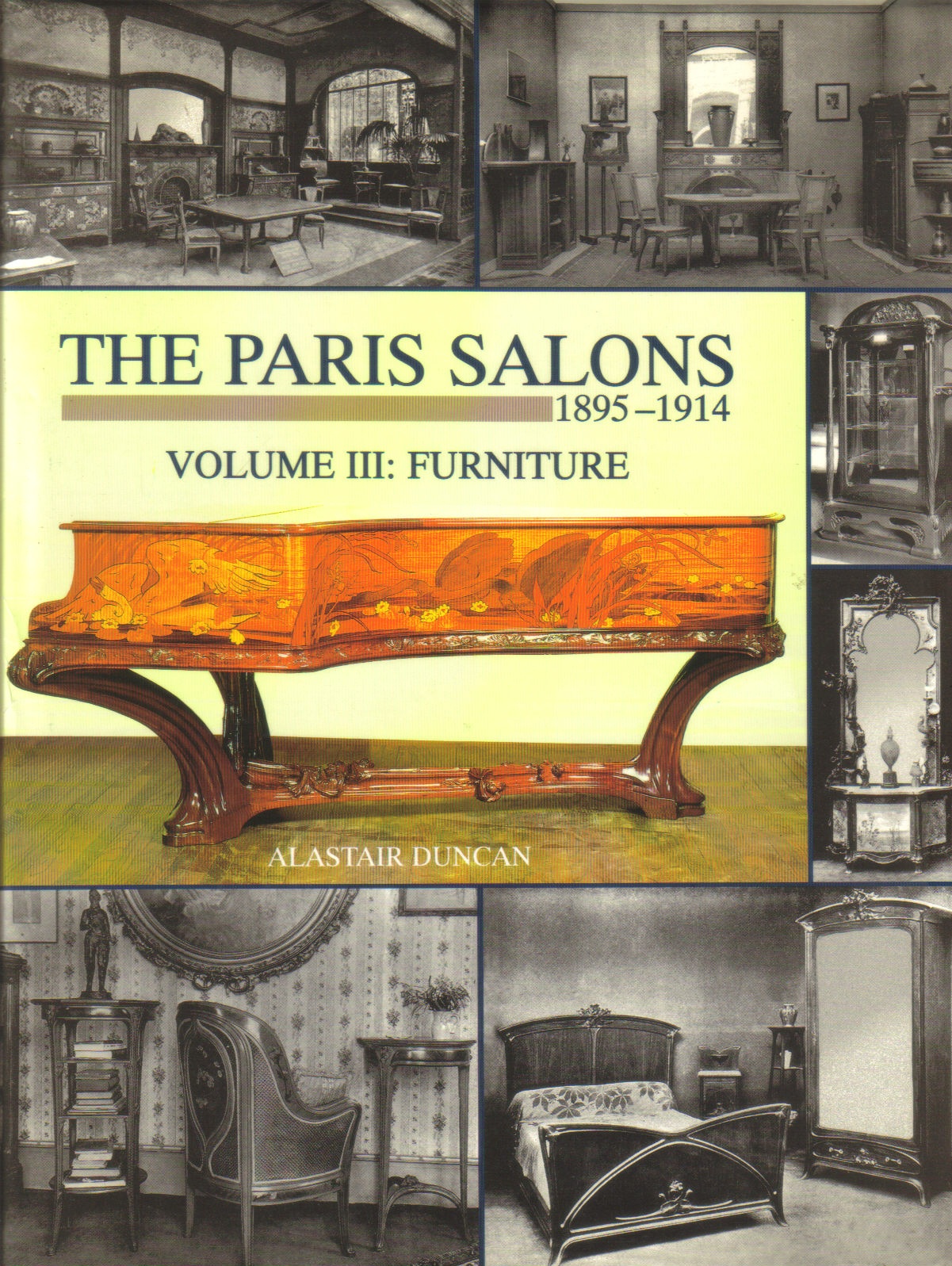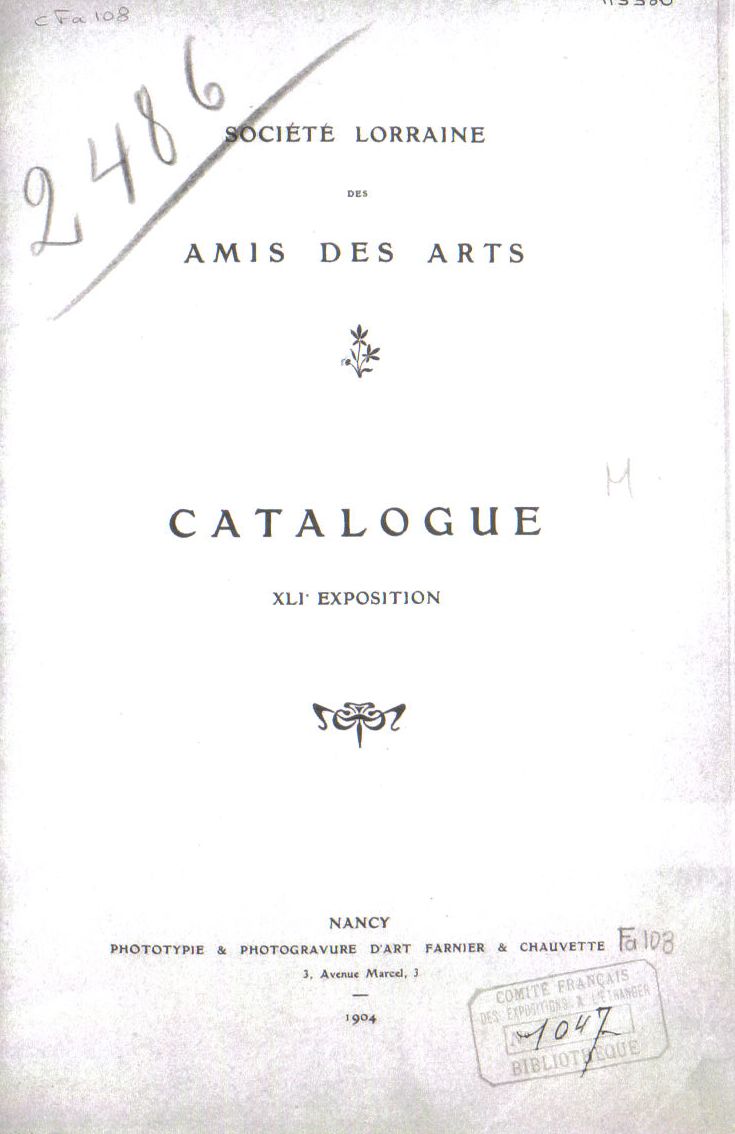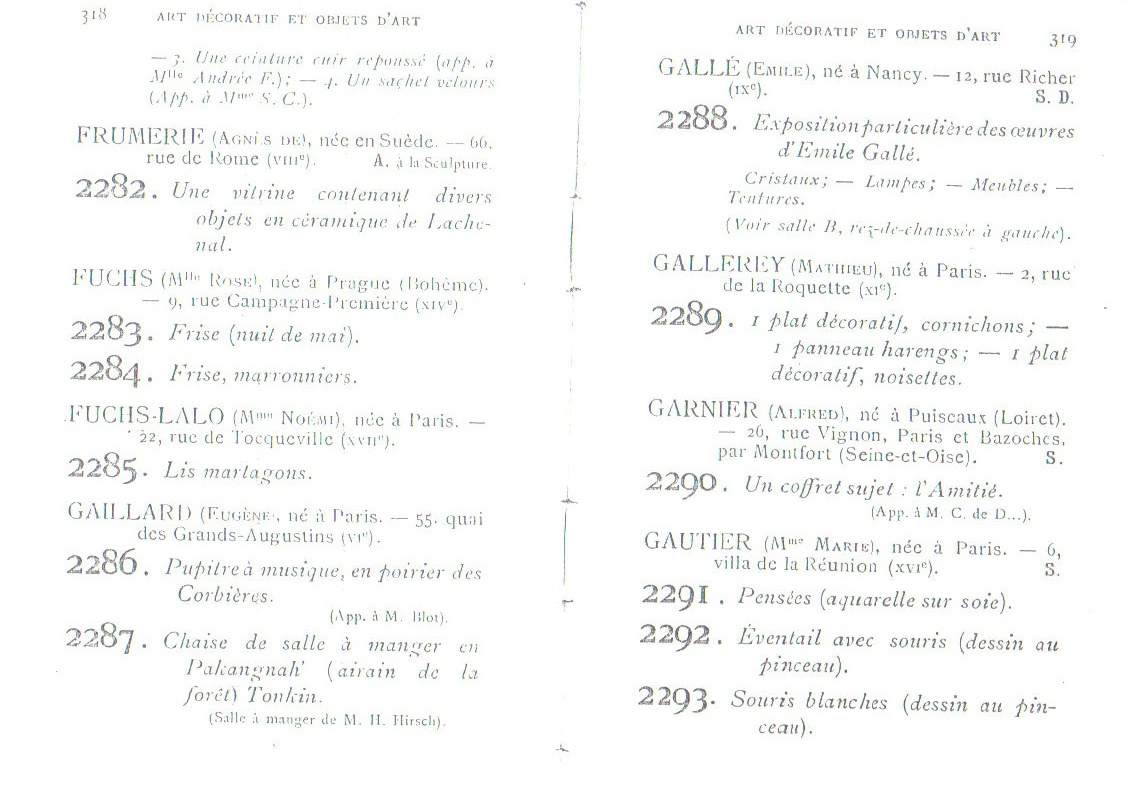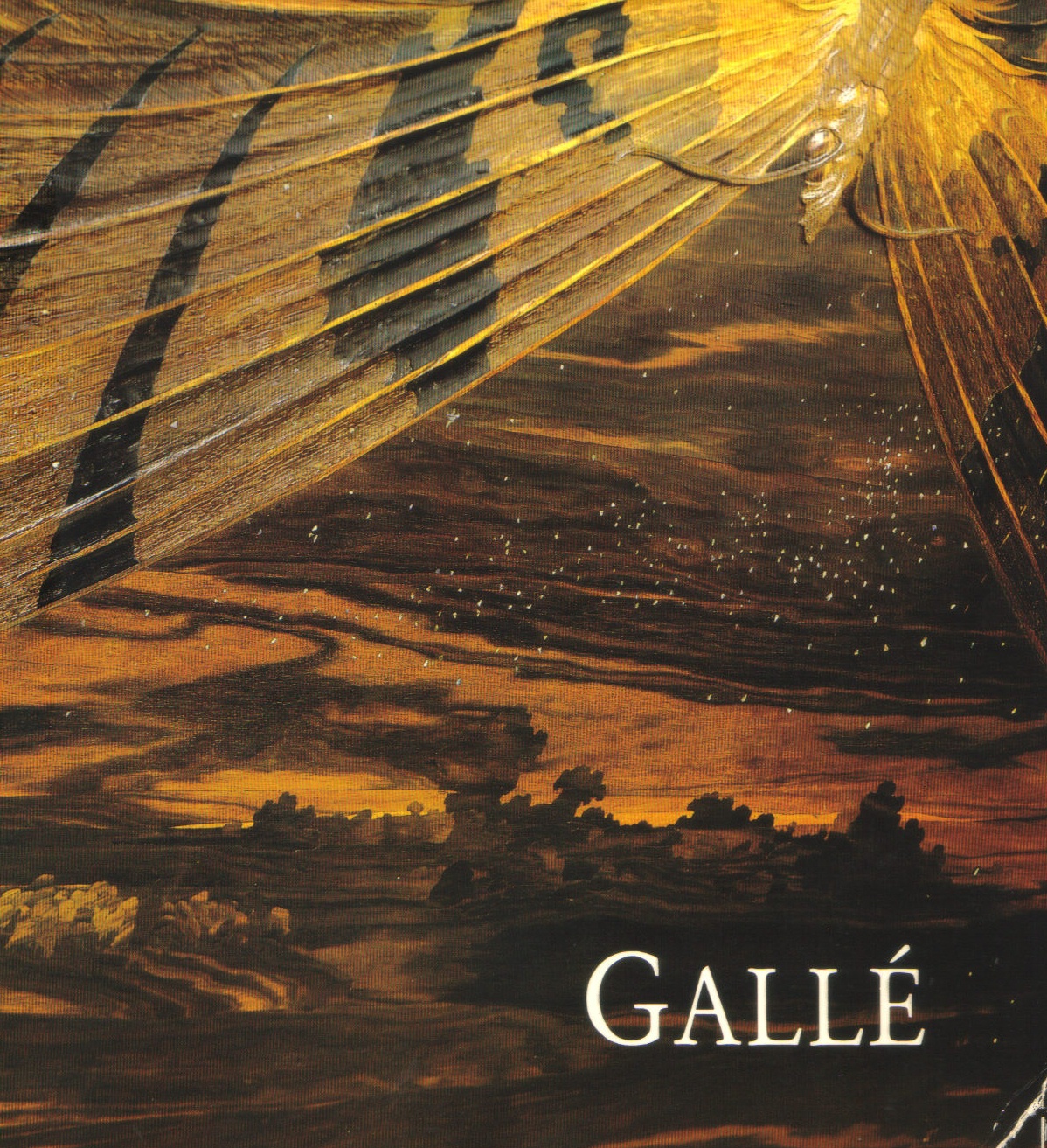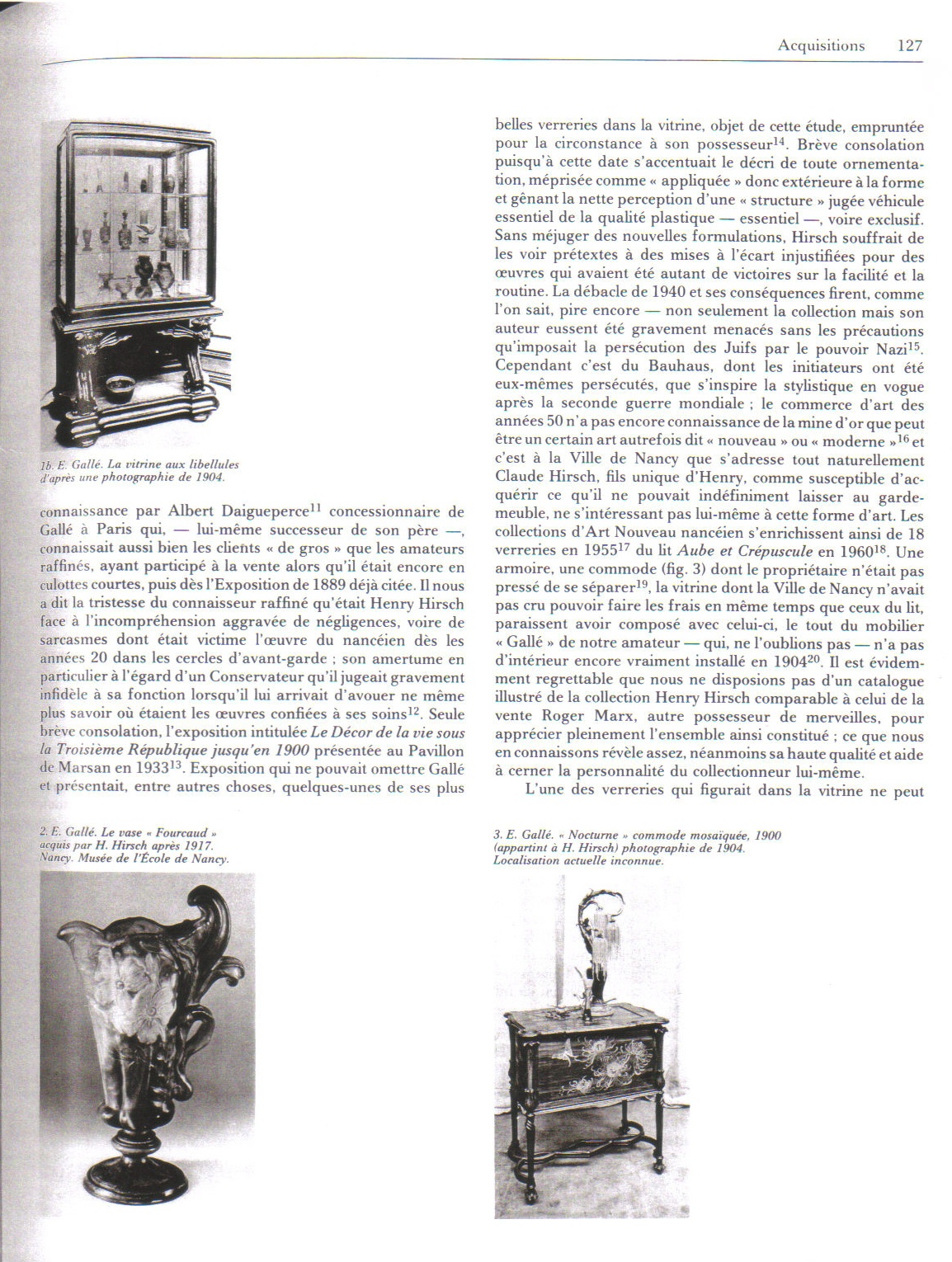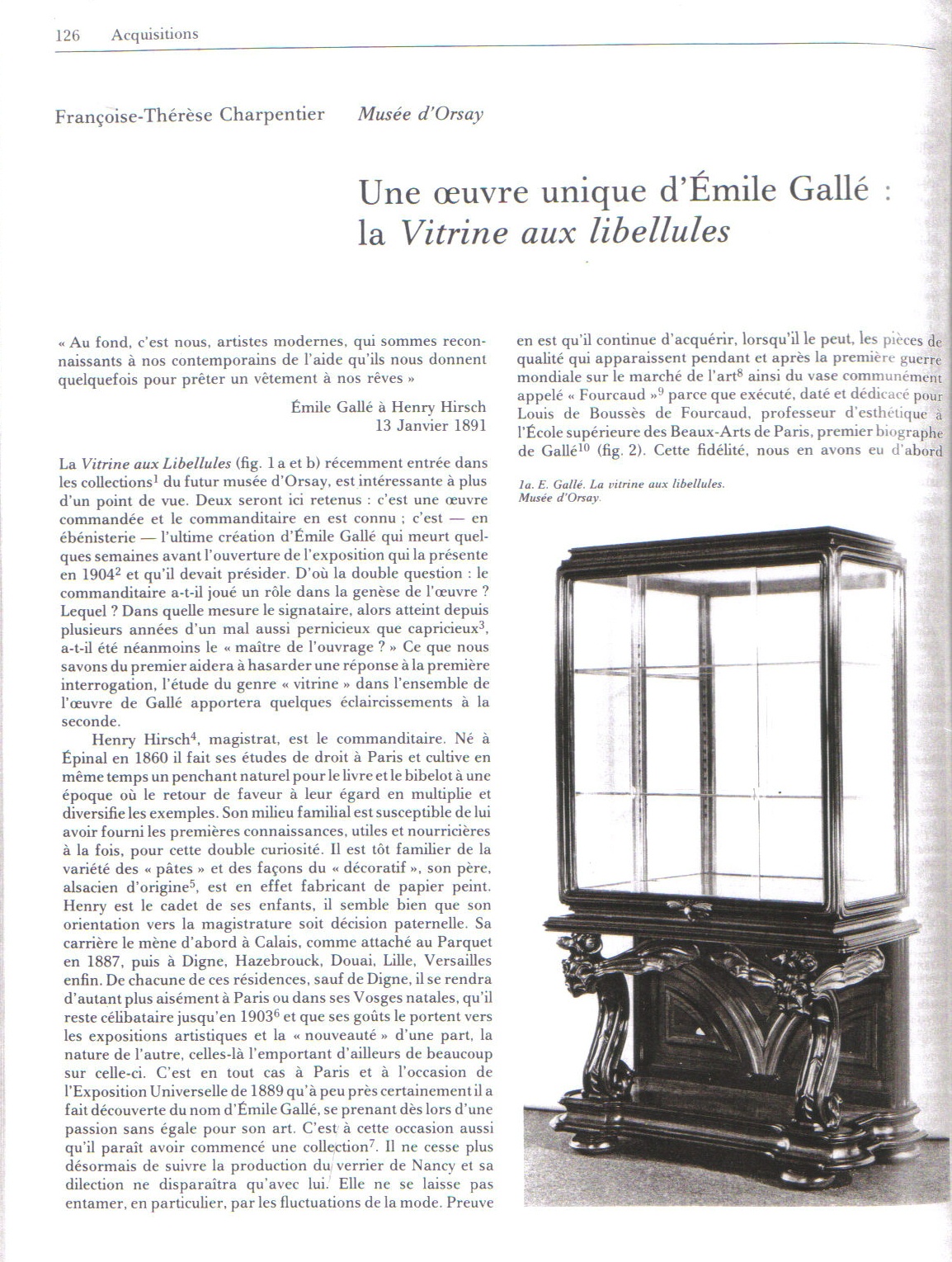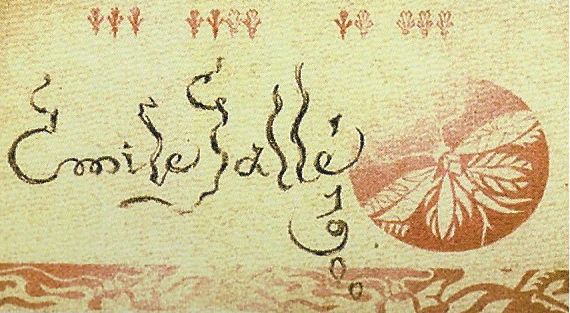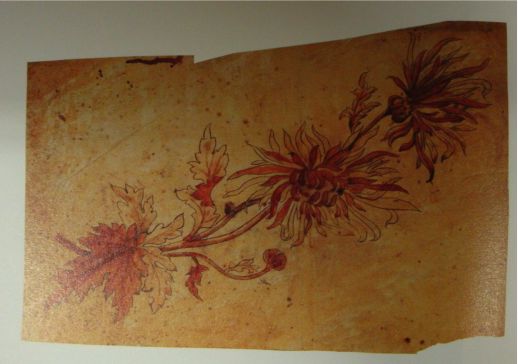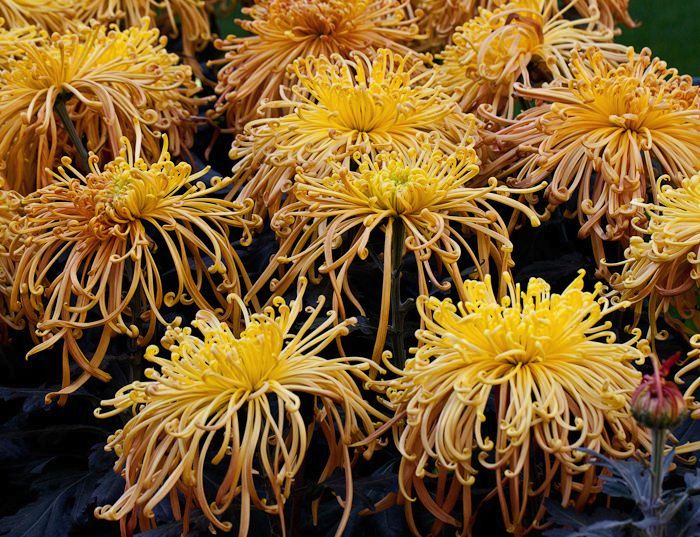Nocturne, An Important Mother-of-Pearl and Fruitwood Marquetry-Inlaid Two-Drawer Commode
By Emile Gallé, 1900-1904
With marquetry signature Gallé
34 ½ in (86.7 cm) high, 34 ½ in (86.7 cm) wide, 22 in (55.9 cm) deep
Provenance
Henry Hirsch
Claude Hirsch
Robert S. Walker
Exhibited
Exposition of Decorative Art, Nancy, 1903
40-ème Exposition, Société Lorraine des Amis des Arts, Nancy, 1904
Salon de l'Ecole Nationale Supérieure des Beaux Arts, Paris, 1905
Le Salon des Industries du Mobilier, Paris, 1905
'Décor de la vie sous la 3ème république', Musée des Arts Décoratifs, Paris, 1933
Literature
R.C. d'Einvaux, 'L'Exposition d'art Décoratif Lorrain à Nancy', L'Art Décoratif, Tome, 11/12, 1903, p. 97-104
Société Lorraine des Amis des Arts Catalogue XLI Exposition, Nancy, 1904, p.41, no. 82
Salon de l'Ecole Nationale Supérieure des Beaux Arts, Paris, 1905, no. 2288
Le Décor de la Vie sous La IIIe République de 1870 à 1900, Pavillon de Marsan, Palais du Louvre, 1933, p. 129, no. 1000
Françoise-Thérèse Charpentier, 'Une oeuvre unique d'Émile Gallé: la Vitrine aux libellules', La Revue du Louvre, No. 2, 1983, p. 127
Alastair Duncan, The Paris Salons: 1895-1914, vol. 3: Furniture, p. 225, 236-237
Alastair Duncan and Georges De Bartha, Galle Furniture, p. 80, 97
Édith Mannoni, Meubles et Ensembles: Style 1900, 1968, p. 54
cf. Gallé, Exh. Cat., Musée du Luxembourg, Paris, 29 November 1985 – 2 February 1986, p. 270
Revue des Arts Décoratifs, November 1900, p.370
34 ½ in (86.7 cm) high, 34 ½ in (86.7 cm) wide, 22 in (55.9 cm) deep
Provenance
Henry Hirsch
Claude Hirsch
Robert S. Walker
Exhibited
Exposition of Decorative Art, Nancy, 1903
40-ème Exposition, Société Lorraine des Amis des Arts, Nancy, 1904
Salon de l'Ecole Nationale Supérieure des Beaux Arts, Paris, 1905
Le Salon des Industries du Mobilier, Paris, 1905
'Décor de la vie sous la 3ème république', Musée des Arts Décoratifs, Paris, 1933
Literature
R.C. d'Einvaux, 'L'Exposition d'art Décoratif Lorrain à Nancy', L'Art Décoratif, Tome, 11/12, 1903, p. 97-104
Société Lorraine des Amis des Arts Catalogue XLI Exposition, Nancy, 1904, p.41, no. 82
Salon de l'Ecole Nationale Supérieure des Beaux Arts, Paris, 1905, no. 2288
Le Décor de la Vie sous La IIIe République de 1870 à 1900, Pavillon de Marsan, Palais du Louvre, 1933, p. 129, no. 1000
Françoise-Thérèse Charpentier, 'Une oeuvre unique d'Émile Gallé: la Vitrine aux libellules', La Revue du Louvre, No. 2, 1983, p. 127
Alastair Duncan, The Paris Salons: 1895-1914, vol. 3: Furniture, p. 225, 236-237
Alastair Duncan and Georges De Bartha, Galle Furniture, p. 80, 97
Édith Mannoni, Meubles et Ensembles: Style 1900, 1968, p. 54
cf. Gallé, Exh. Cat., Musée du Luxembourg, Paris, 29 November 1985 – 2 February 1986, p. 270
Revue des Arts Décoratifs, November 1900, p.370
At the 1900 Paris Exhibition, Gallé exhibited a similar commode called Ipomoea, which was well received, and is now in the collection at the Victoria and Albert Museum, London. Its exhibition inspired the commission of the present commode, Nocturne, for the important collector Henry Hirsch of Nancy. Hirsch did not like the discrete marquetry on the Ipomoea commode, so requested something different. The same framework was used but the morning glories on the broad panels of the Ipomoea were replaced by chrysanthemums and a mother-of-pearl butterfly. It is believed that no other Nocturne commode was ever made and this piece can be regarded as an undiscovered treasure.
An avid collector of Gallé's glass, Hirsch's name is also associated with many of the artist's most important pieces of furniture. He was born in Epinal, Lorraine, 24th July 1862 and the National Archives in Nancy suggest that he was a magistrate. Signed photographs and letters from the archives point to a close friendship with Gallé.
The Nocturne commode, along with the Vitrine aux libellules (Musée d'Orsay, Paris), the Aube et Crépuscule bed (Musée de l'École de Nancy), and the Faune et Flore exotiques armoire (location unknown), were designed for Henry Hirsch as a bedroom suite for his Parisian apartment, to mark his marriage in 1903. Sadly, Gallé died just a couple of weeks before delivering them in 1904. This suite was presented at the Exposition of Decorative Art in Nancy organised at the Galeries Poirel, though its opening in October 1904 was postponed for two weeks because of Gallé's death on 23rd September 1904. It represents Gallé's chef d'oeuvre, each piece worthy of a museum. The location of this Nocturne commode was unknown until recently, and its companion, the Faune et Flore exotiques armoire, remains hidden. A similar armoire, Africa, is now in the collection of the Horiuchi Louis C. Tiffany Garden Museum in Japan.
After the death of Henry Hirsch, his Gallé collection passed to his son, Claude Hirsch, who started to sell pieces in the 1950s. In 1955, the Musée de l'Ecole de Nancy purchased Hirsch's collection of glass and in 1960, the important Aube et Crépuscule bed. No more went to the Nancy museum: Claude Hirsch was not 'in a rush' to sell the Nocturne commode or the Vitrine aux libellules, and the museum did not have the means to make further purchases. In 1983, the Vitrine aux libellules was finally sold to the Musée d'Orsay in Paris. Around this time, the commode was acquired for the collection of the well-known dealer, Robert S. Walker, later passing to Richard Wright.
The decoration of this commode is significant and points to Gallé's affinity for Japanese art and symbolism. Particularly in his last years, Gallé was inspired by nature in decoration, in the shapes of his vessels, even combining it with poetry to imbue his work with richly symbolic meaning. Ongoing analysis of the collection of Japan-related books Gallé owned, the sketches that have survived in his studio and his writings, suggest that his relationship with Japanese art may have developed beyond superficial copying to a deeper understanding of Japanese aesthetics. Gallé himself collected art, owned many related publications, conducted research and did experiments; he even planted over 100 Japanese plant varieties in his garden.
Gallé's relationship with Japanese art evolved dramatically in the 1880s, its influence shifting from a graphical to a more sensory and essential level. Where he borrowed a motif from Japanese art, he now exercised great creativity, fusing that motif with his own French heritage. Gallé was also interested in the Japanese concept of mono no aware, whereby art is regarded as a fundamental element of life, endowing everyday objects with beauty. Such a commode as the Nocturne demonstrates this notion clearly.
As a motif, the chrysanthemum was of significance to Gallé not only as a flower, but because it symbolised Japan. Around 1878-80, he used the name 'garniture chrysanthème Japon' for a collection of motifs he concieved for painting on glass and saw as the summary of his Japan-inspired ideas. Similarly, in the message to Hokkai he referred to Japan as 'the land of the chrysanthemum.' In 'Chrysanthèmes et glaïeuls', Bulletin de la Société d'Horticulture de Nancy, December 1886, Gallé wrote that chrysanthemums are fashionable, which would explain Hirsch's request for them on this commode.
In the Far East, the butterfly was an important feature in the decoration of porcelain, cloisonné objects and textiles as it symbolised many different aspects of life. Two butterflies symbolically represent the officiants at a wedding ceremony and the companions of a young couple setting out upon life's journey, fluttering before them to lead them into a magical flowering garden, thus evoking the realm of dreams and also happiness. The presence of the two butterflies on Gallé's Nocturne commode endorses the view that the commission of this piece was related to the marriage of Henry Hirsch.
Another notable point is the title of the commode – Nocturne. A reference to music, a nocturne is a musical composition that is inspired by or evocative of the night, at once tranquil, expressive and lyrical. Nocturnes became increasingly popular during the mid- to late 19th century in Europe and composers such as Claude Debussy and Frederic Chopin composed masterpieces by this name, evoking the essence of the night. The title was also used for works of art, and as Henry Hirsch counted music amongst the arts he loved, perhaps the word ,nocturne , had a particular resonance for him.
An avid collector of Gallé's glass, Hirsch's name is also associated with many of the artist's most important pieces of furniture. He was born in Epinal, Lorraine, 24th July 1862 and the National Archives in Nancy suggest that he was a magistrate. Signed photographs and letters from the archives point to a close friendship with Gallé.
The Nocturne commode, along with the Vitrine aux libellules (Musée d'Orsay, Paris), the Aube et Crépuscule bed (Musée de l'École de Nancy), and the Faune et Flore exotiques armoire (location unknown), were designed for Henry Hirsch as a bedroom suite for his Parisian apartment, to mark his marriage in 1903. Sadly, Gallé died just a couple of weeks before delivering them in 1904. This suite was presented at the Exposition of Decorative Art in Nancy organised at the Galeries Poirel, though its opening in October 1904 was postponed for two weeks because of Gallé's death on 23rd September 1904. It represents Gallé's chef d'oeuvre, each piece worthy of a museum. The location of this Nocturne commode was unknown until recently, and its companion, the Faune et Flore exotiques armoire, remains hidden. A similar armoire, Africa, is now in the collection of the Horiuchi Louis C. Tiffany Garden Museum in Japan.
After the death of Henry Hirsch, his Gallé collection passed to his son, Claude Hirsch, who started to sell pieces in the 1950s. In 1955, the Musée de l'Ecole de Nancy purchased Hirsch's collection of glass and in 1960, the important Aube et Crépuscule bed. No more went to the Nancy museum: Claude Hirsch was not 'in a rush' to sell the Nocturne commode or the Vitrine aux libellules, and the museum did not have the means to make further purchases. In 1983, the Vitrine aux libellules was finally sold to the Musée d'Orsay in Paris. Around this time, the commode was acquired for the collection of the well-known dealer, Robert S. Walker, later passing to Richard Wright.
The decoration of this commode is significant and points to Gallé's affinity for Japanese art and symbolism. Particularly in his last years, Gallé was inspired by nature in decoration, in the shapes of his vessels, even combining it with poetry to imbue his work with richly symbolic meaning. Ongoing analysis of the collection of Japan-related books Gallé owned, the sketches that have survived in his studio and his writings, suggest that his relationship with Japanese art may have developed beyond superficial copying to a deeper understanding of Japanese aesthetics. Gallé himself collected art, owned many related publications, conducted research and did experiments; he even planted over 100 Japanese plant varieties in his garden.
Gallé's relationship with Japanese art evolved dramatically in the 1880s, its influence shifting from a graphical to a more sensory and essential level. Where he borrowed a motif from Japanese art, he now exercised great creativity, fusing that motif with his own French heritage. Gallé was also interested in the Japanese concept of mono no aware, whereby art is regarded as a fundamental element of life, endowing everyday objects with beauty. Such a commode as the Nocturne demonstrates this notion clearly.
As a motif, the chrysanthemum was of significance to Gallé not only as a flower, but because it symbolised Japan. Around 1878-80, he used the name 'garniture chrysanthème Japon' for a collection of motifs he concieved for painting on glass and saw as the summary of his Japan-inspired ideas. Similarly, in the message to Hokkai he referred to Japan as 'the land of the chrysanthemum.' In 'Chrysanthèmes et glaïeuls', Bulletin de la Société d'Horticulture de Nancy, December 1886, Gallé wrote that chrysanthemums are fashionable, which would explain Hirsch's request for them on this commode.
In the Far East, the butterfly was an important feature in the decoration of porcelain, cloisonné objects and textiles as it symbolised many different aspects of life. Two butterflies symbolically represent the officiants at a wedding ceremony and the companions of a young couple setting out upon life's journey, fluttering before them to lead them into a magical flowering garden, thus evoking the realm of dreams and also happiness. The presence of the two butterflies on Gallé's Nocturne commode endorses the view that the commission of this piece was related to the marriage of Henry Hirsch.
Another notable point is the title of the commode – Nocturne. A reference to music, a nocturne is a musical composition that is inspired by or evocative of the night, at once tranquil, expressive and lyrical. Nocturnes became increasingly popular during the mid- to late 19th century in Europe and composers such as Claude Debussy and Frederic Chopin composed masterpieces by this name, evoking the essence of the night. The title was also used for works of art, and as Henry Hirsch counted music amongst the arts he loved, perhaps the word ,nocturne , had a particular resonance for him.

















